Starting with Sketchnotes
This post is essentially a talk I gave at UX Camp Perth 2023. It doesn't have quite the same effect when it's not live, but I wanted to share it with anyone who couldn't be there for it.
Here are my own sketchnotes from UX Camp Perth 2023 for the other excellent talks/workshops from the day!
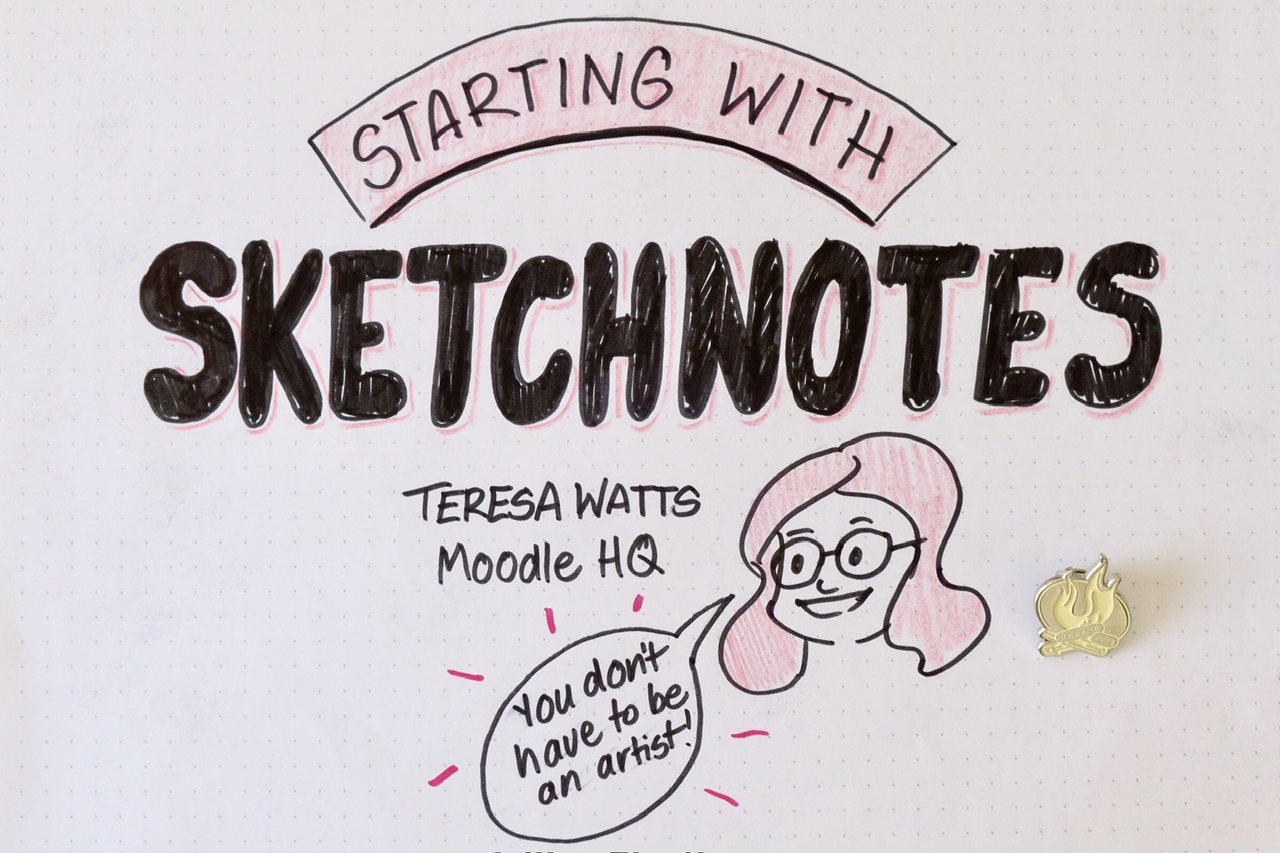
One thing I like to point out before I get started - you don't have to be an artist. People can be scared of drawing because they think they won't be any good at it. But you don't have to be an expert at drawing to make sketchnotes.
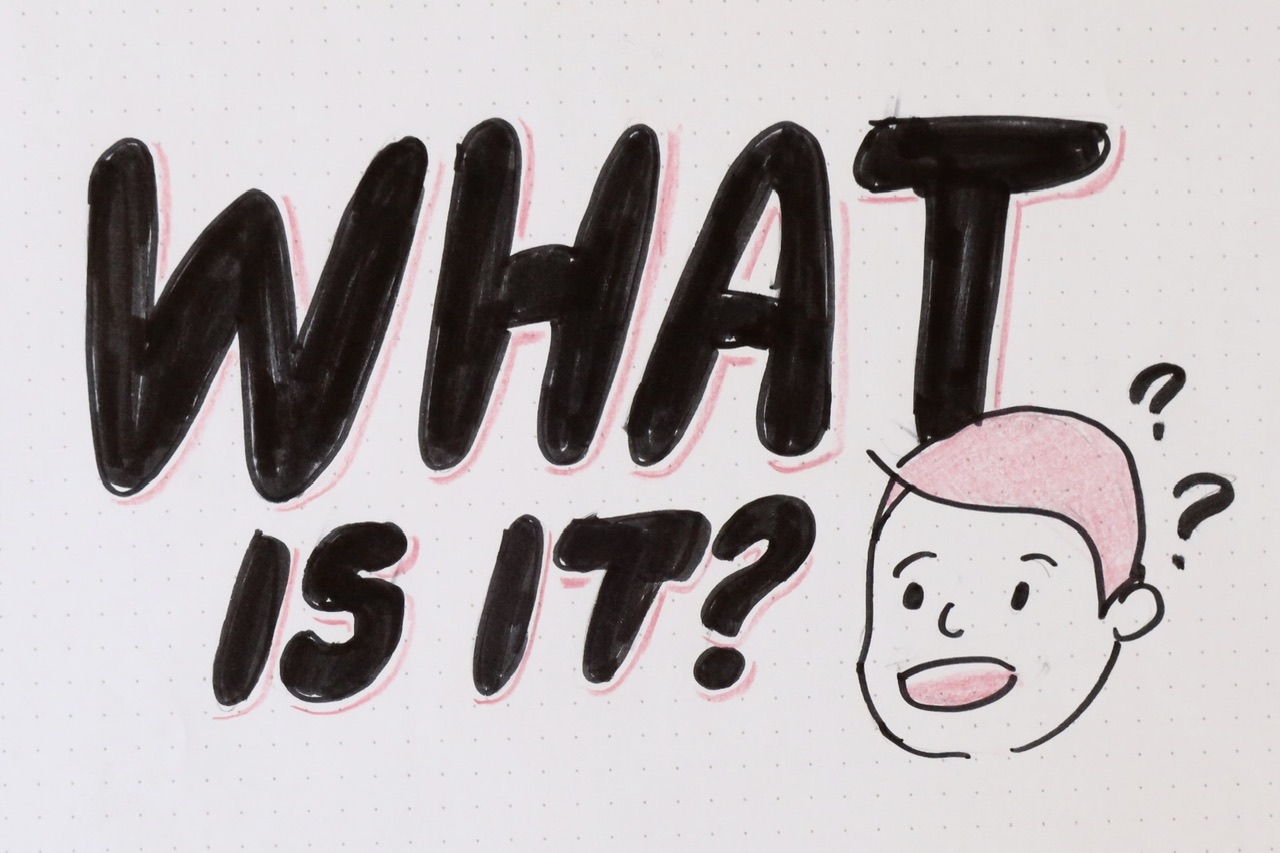
What is it?
We're all familiar with traditional notes. They tend to be in a linear format, written in lines. Possibly light formatting (bold, italic etc). The meaning is conveyed through the words themselves. These days most people will type notes rather than writing by hand.
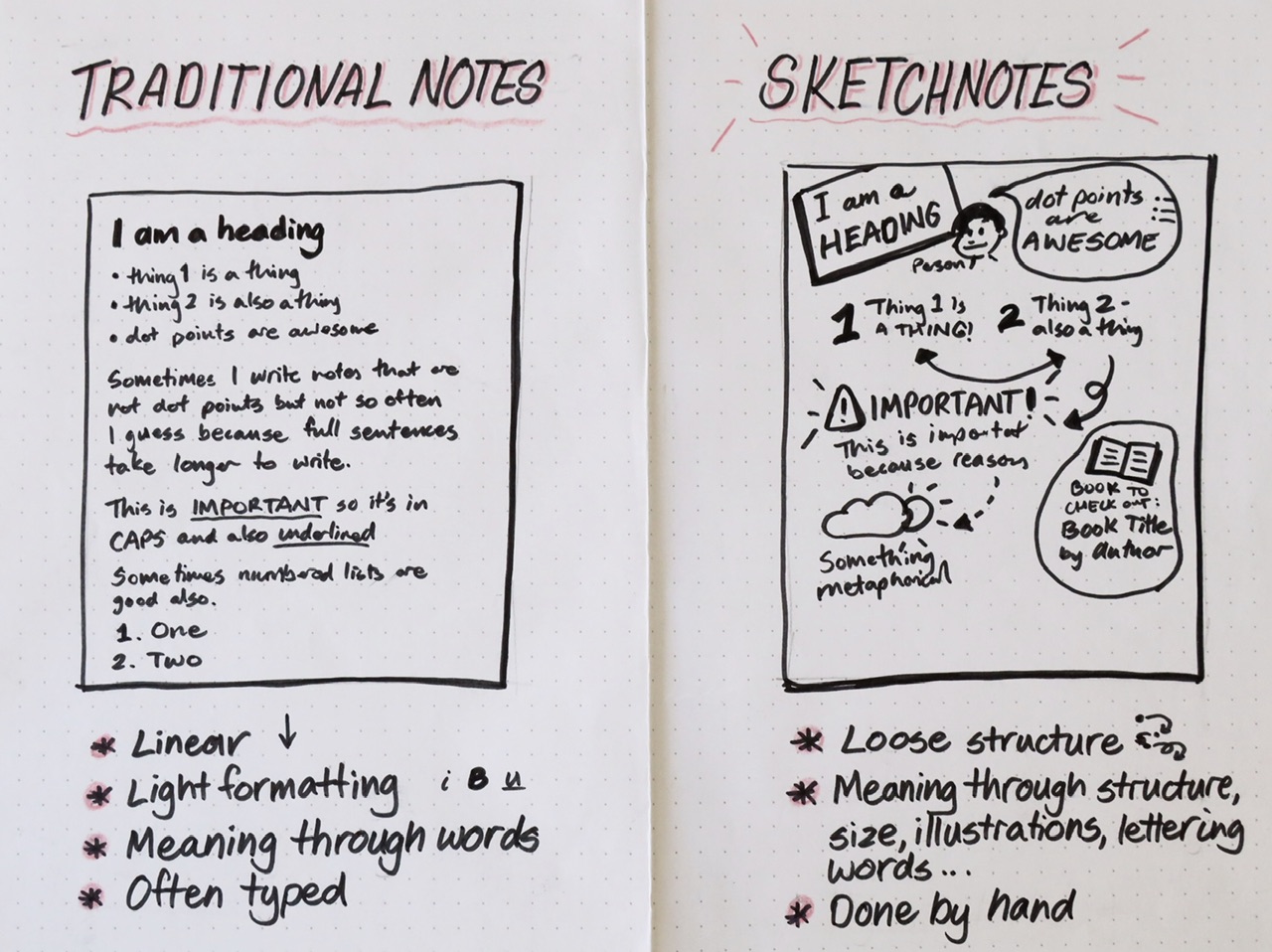
In contrast, sketchnotes are a visual way of taking notes. Instead of a linear structure, it can be loose - it doesn't have to follow top to bottom, left to right - it can zoom around. The meaning is conveyed through the structure, illustrations, lettering and words layered together into something that is more alive. It has to be created by hand and is highly personal to the creator. It also takes a lot more work!
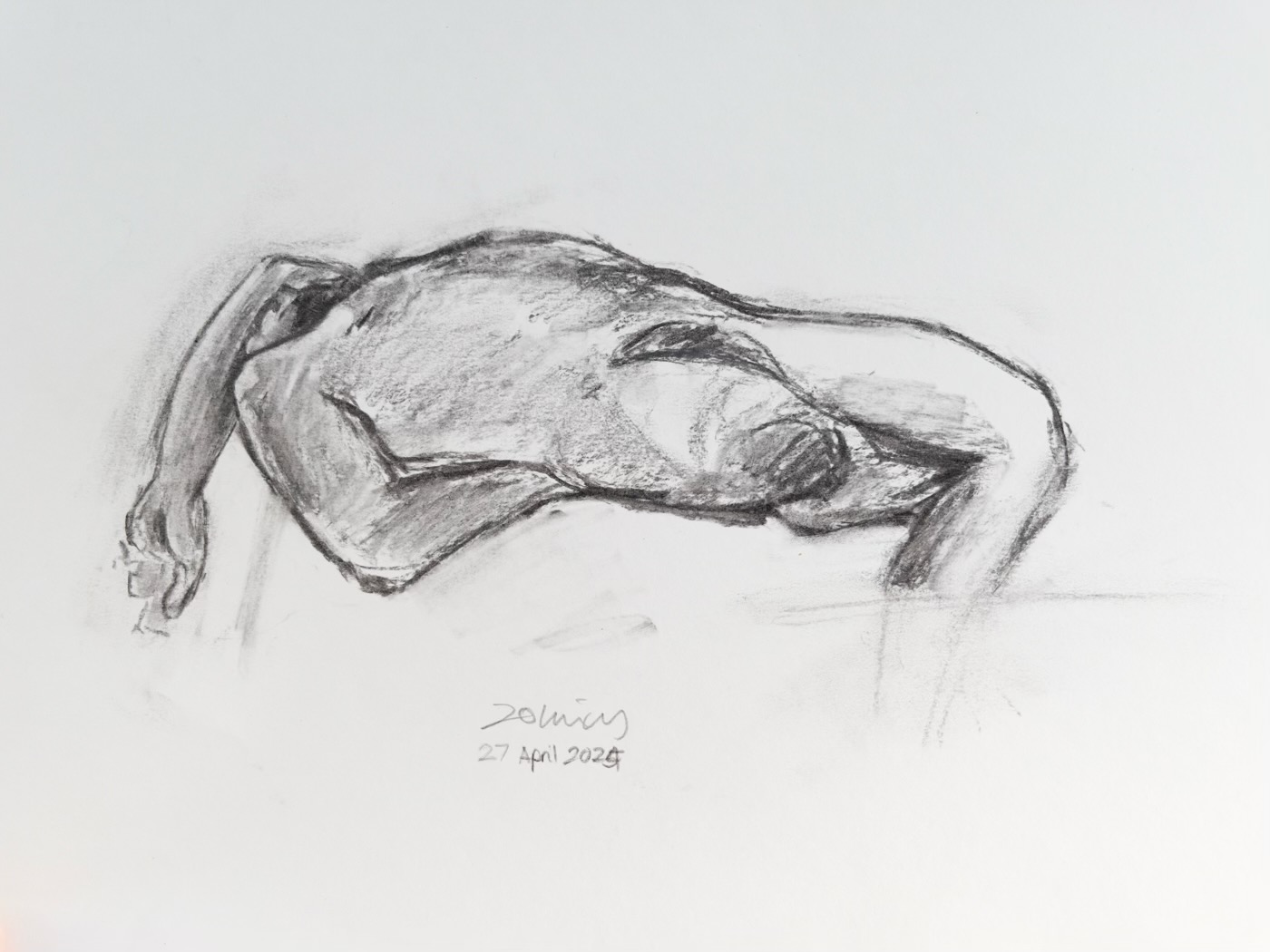
But why?
It helps you to learn by engaging different parts of your brain. If you're just passively listening to a presentation, you're receiving that input through your ears and eyes, but might not be actively engaging with it. It's easy to get distracted. Even if you're typing notes, because of the speed of typing you can capture a lot more of what the speaker is saying, without necessarily thinking about it.
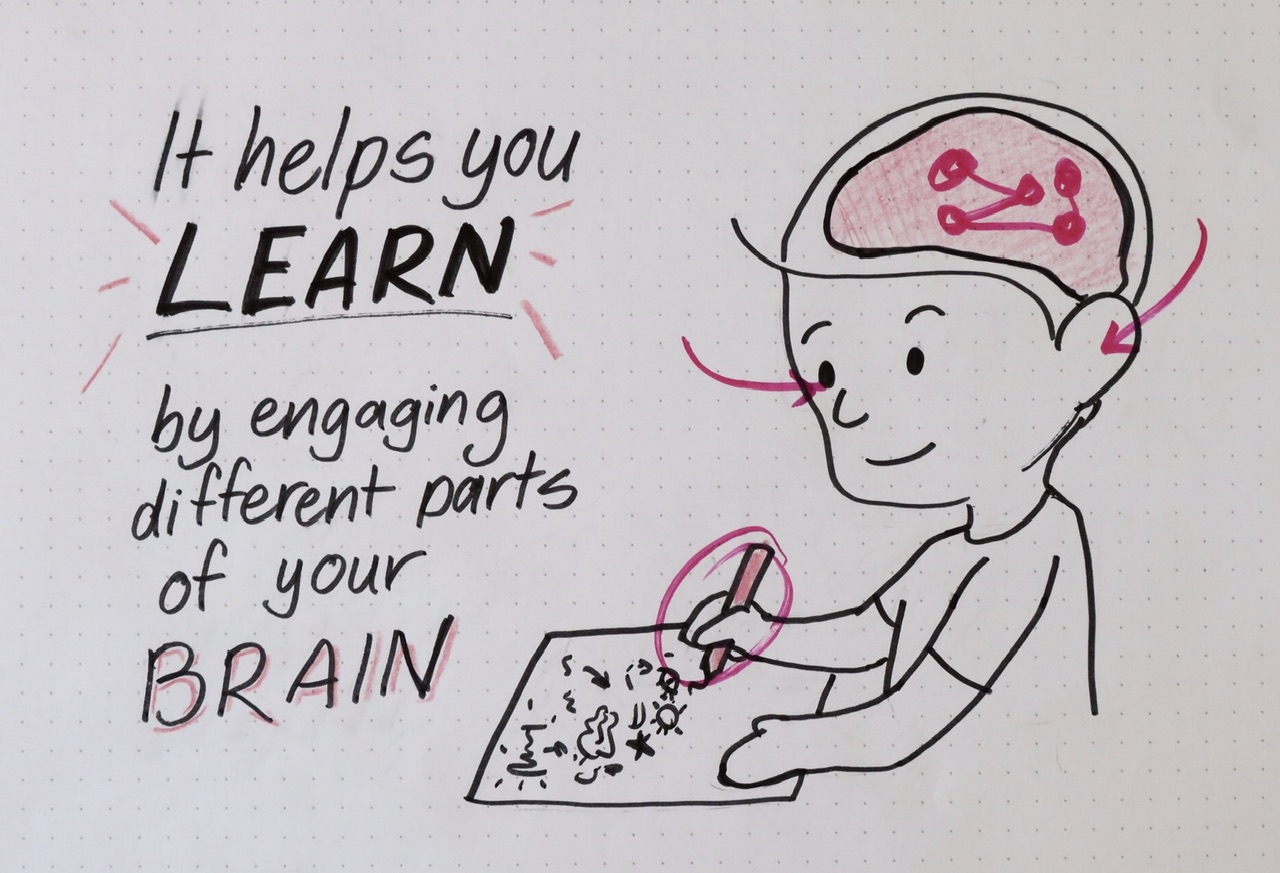
When you're sketchnoting, you're actively listening and trying to figure out what is or isn't worth getting down on paper, because it isn't fast enough to capture everything, only the big ideas and the parts that speak to you personally. There's research to suggest that rather than being a bad thing, this helps create more connections in your brain around the ideas that you're capturing and how it fits into your existing knowledge, making it easier to learn and recall later. There's also the kinaesthetic aspect of using your hands to write or draw which is again bringing in another part of your brain, and further embedding meaning and memory into what you create.
Visual thinking skills are also relevant for just sketching to ideate or figure things out, by yourself or with others. Getting different parts of your brain involved can help break out through to different ways of thinking and learning.
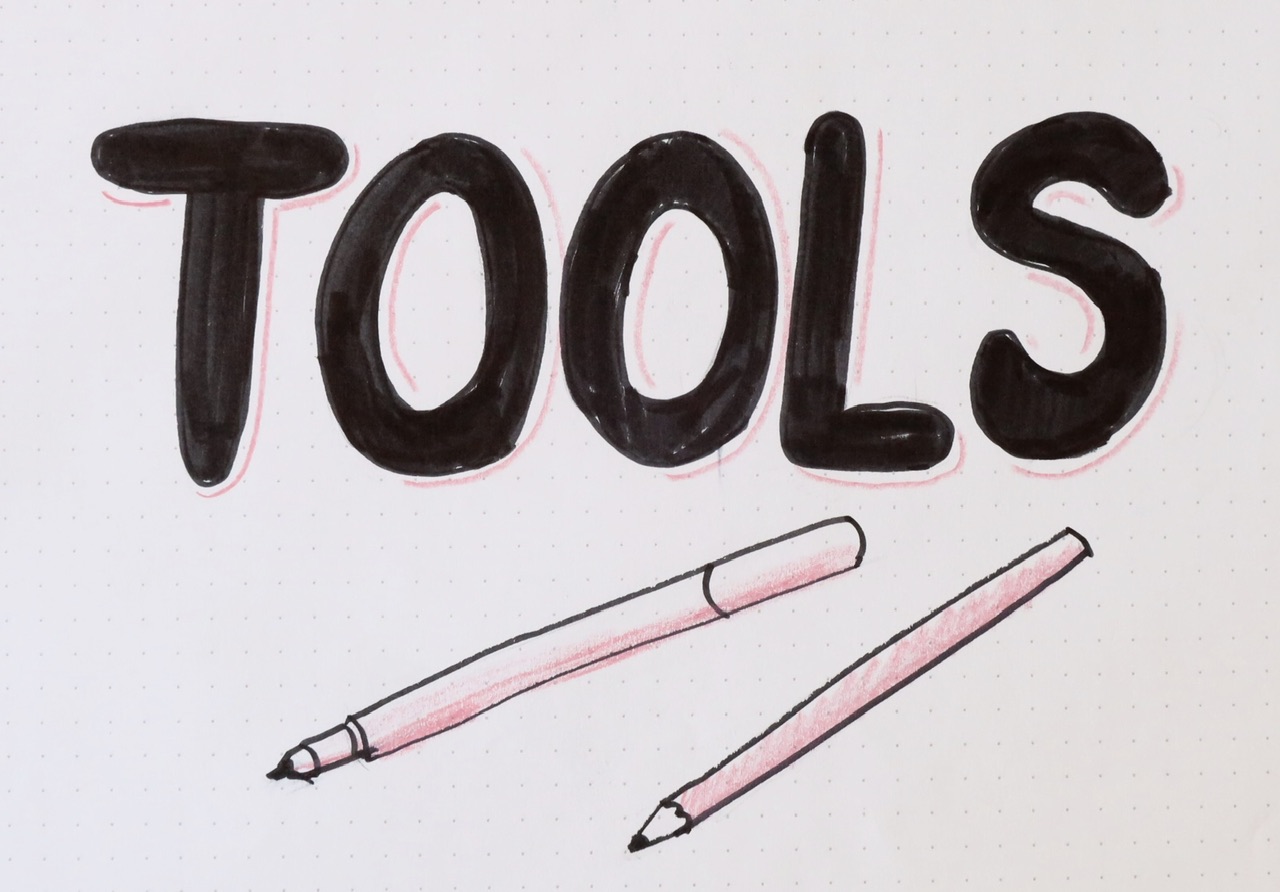
Tools
The first question I get asked when people see my sketchnotes is "Do you use an iPad, and what app do you use?"
I use an app called Procreate on my iPad, and it's great (and affordable). There are a lot of cool things you can do with it - different brushes, colours, erase, select and resize and move things around.
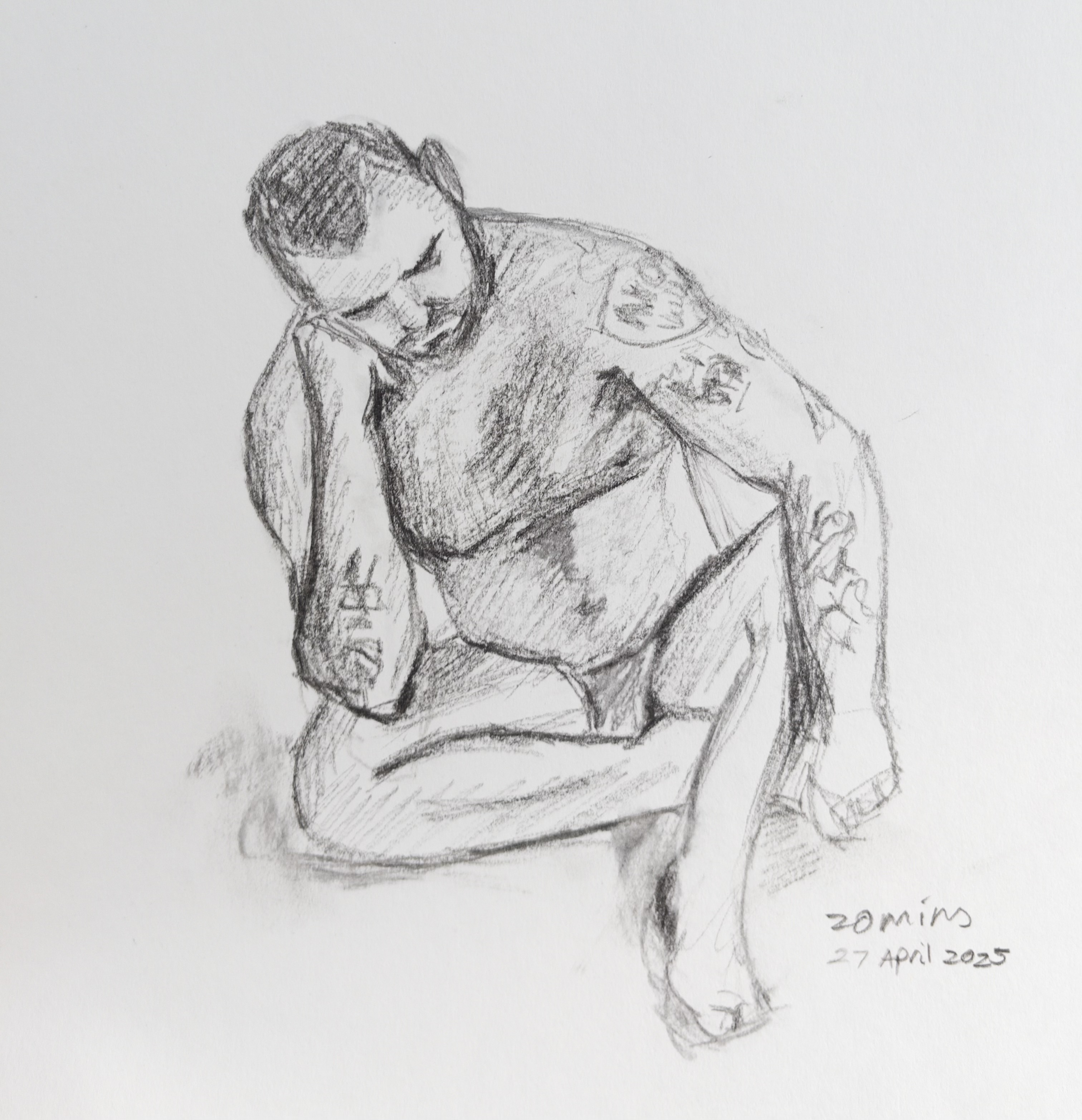
Tip: it won't magically make you good at drawing! If you don't get great results drawing on paper then it will be the same working digitally.
But! The iPad is an expensive tool to buy and has an overwhelming number of options. Don't think that you can't take sketchnotes if you don't have an iPad - it’s definitely not a necessity.

What I suggest is to start with what you have, then get fancy later as you get a feel for what you need. Maybe you don't need anything fancier than a ballpoint pen and printer paper. The main thing is to not wait until you have just the right tool before getting started. Start now!
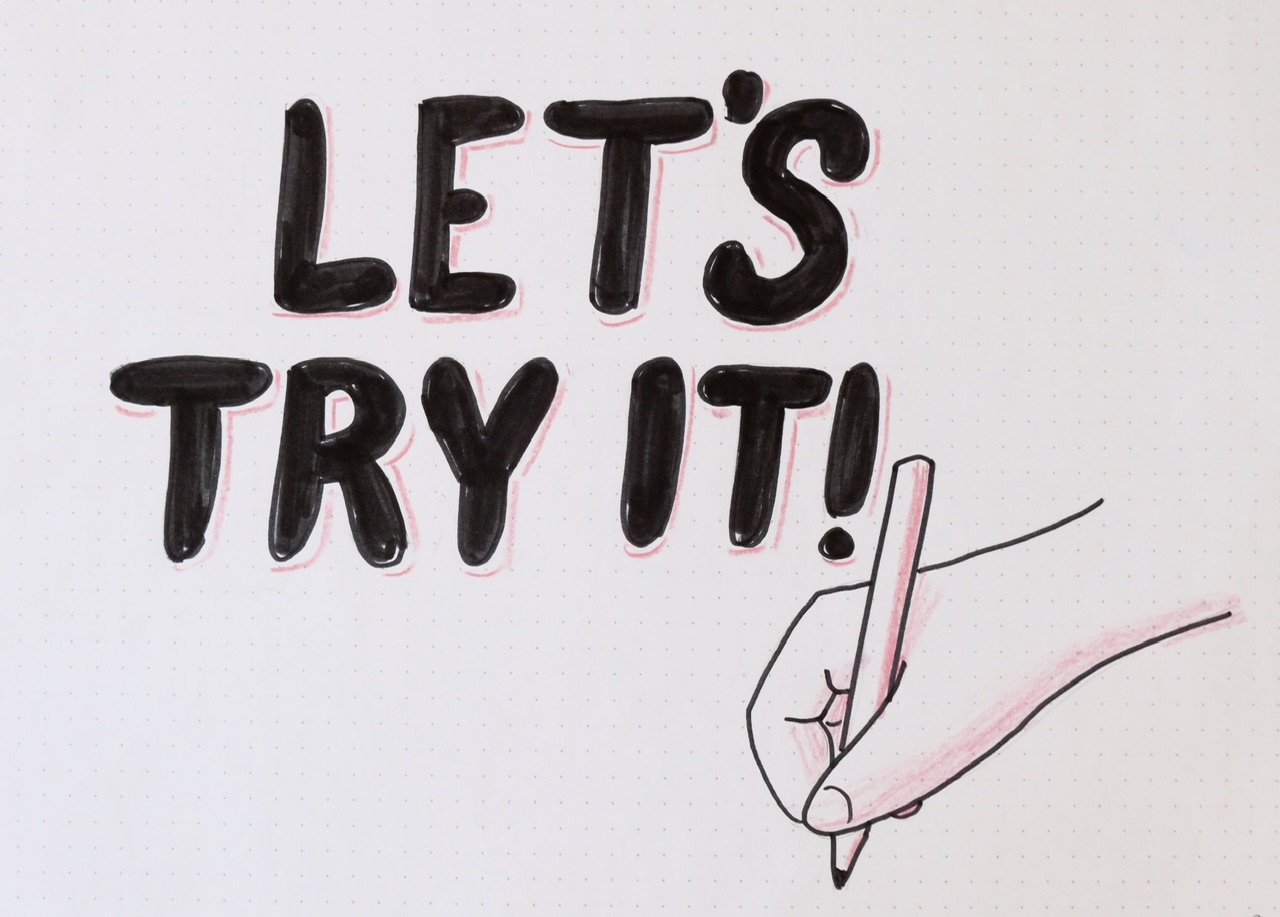
Let's try it!
Feel free to follow along if you want to.
But before we begin:
YOU ARE CREATIVE!
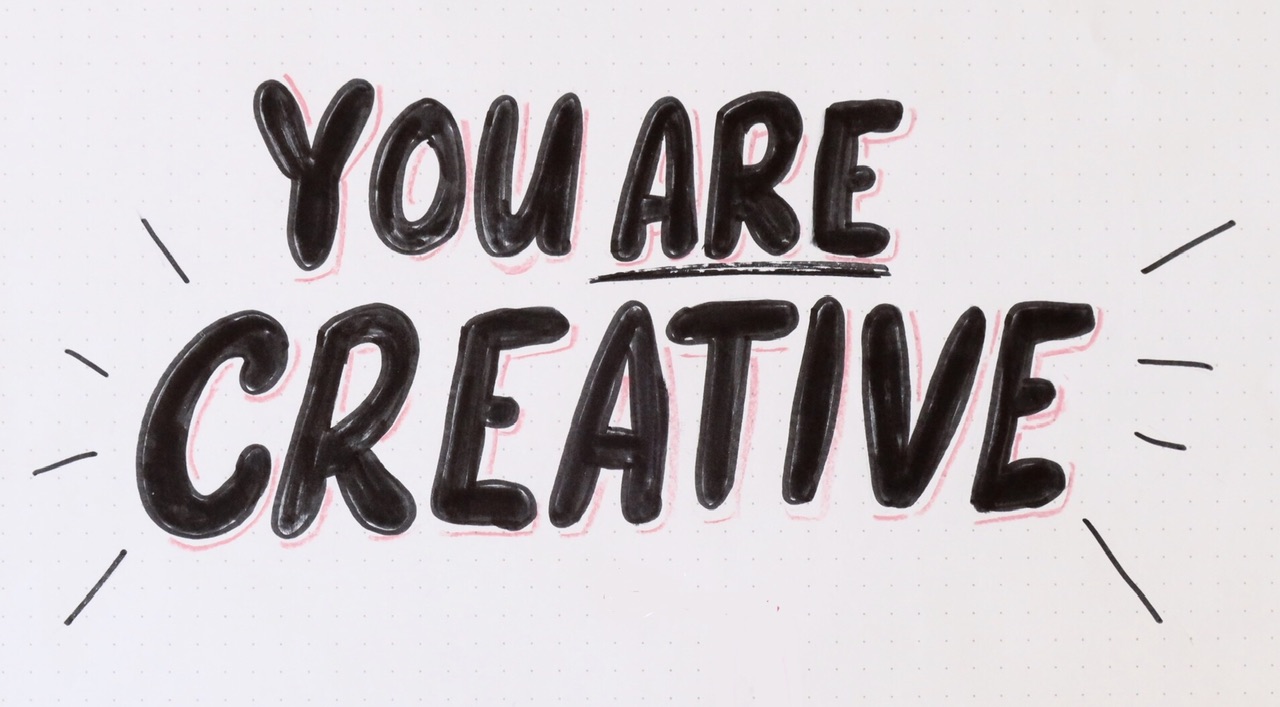
Sometimes people say "it's so cool that you can do that, I can't I'm not creative". But we are all creative, it's an inherent part of being human. You might just not have much experience with drawing. But it's a skill that you can learn with practice.
This is where the live demonstration sketch-with-me part happened. Talking and drawing and writing at the same time is very hard so this isn't my most amazing work but I'm pretty pleased with it. It was inspired by a talk by Eva-Lotta Lamm, which has stuck with me for many years.
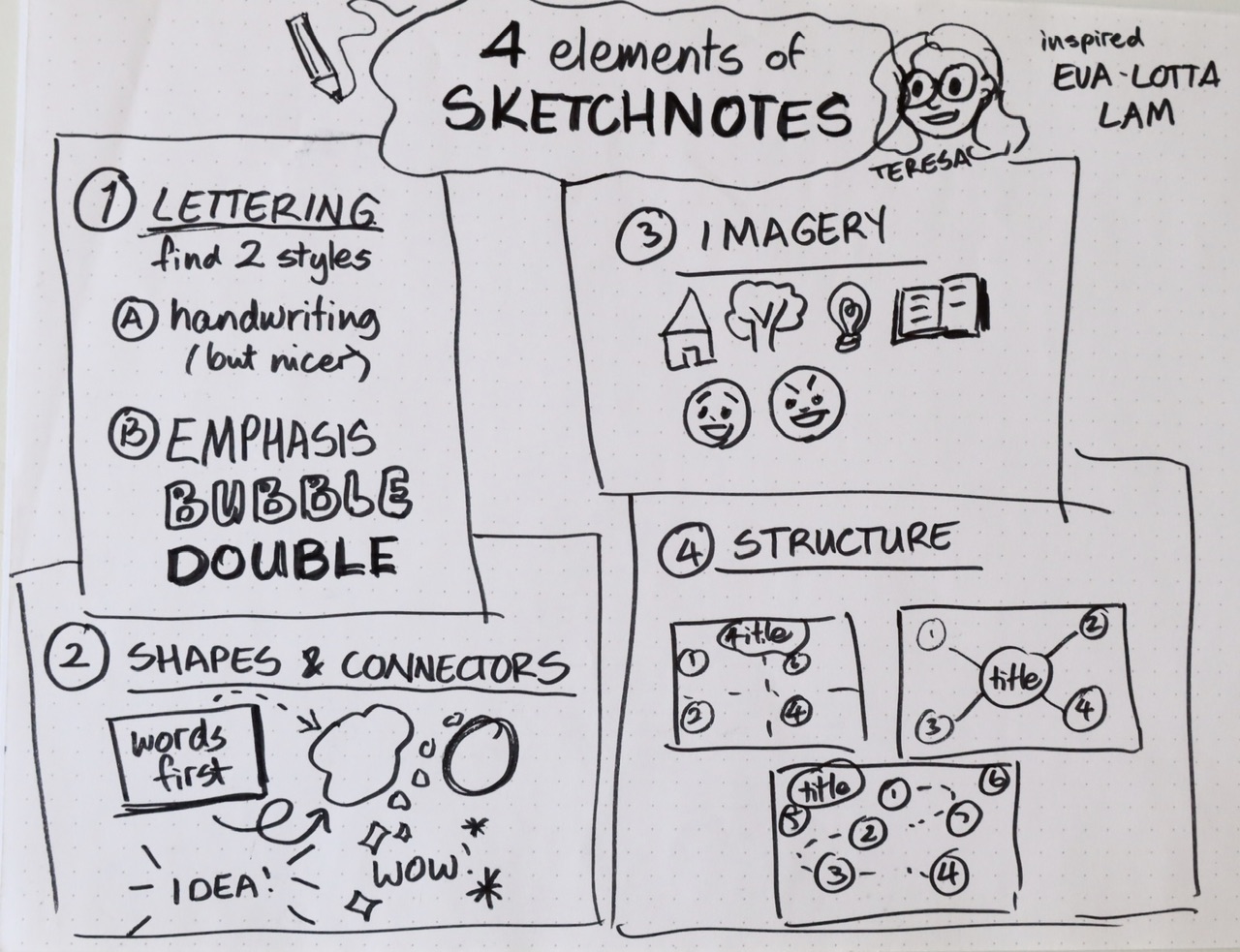
4 elements of sketchnoting
- Lettering
- Shapes and connectors
- Imagery
- Structure
Huge thanks to everyone who came along and showed me their sketchnotes!